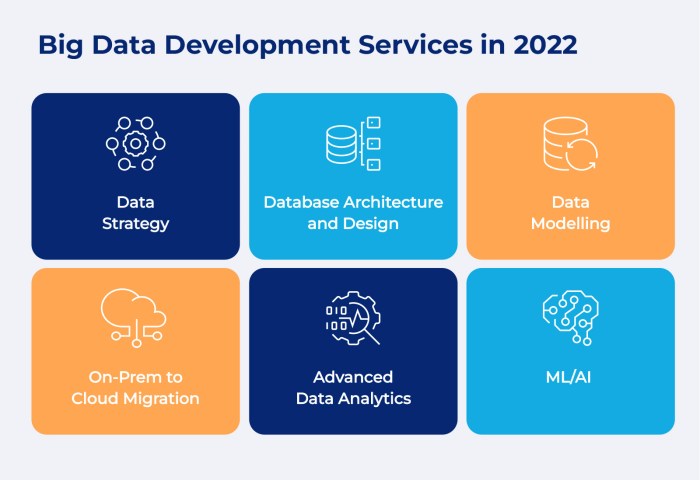Cloud-based big data tools are revolutionizing the way organizations manage and analyze vast amounts of data. As businesses increasingly embrace digital transformation, the significance of these tools becomes even more apparent, offering scalable solutions that meet the demands of modern data analytics. The migration from traditional data management practices to cloud-based platforms has been fueled by advancements in technology and the growing need for real-time insights, making it a pivotal shift in the analytics landscape.
With cloud adoption rates soaring, organizations are now leveraging these tools to enhance collaboration, improve data security, and optimize operational efficiency. The evolution of big data technologies has set the stage for a new era where cloud solutions are at the core of data-driven decision-making, paving the way for innovative practices and enhanced performance across industries.
Introduction to Cloud-Based Big Data Tools
Cloud-based big data tools have revolutionized the way organizations manage and analyze large volumes of data. These tools leverage the power of the cloud to provide scalable, flexible, and efficient solutions for data storage and processing. In recent years, the evolution of big data technologies and the rapid shift towards cloud solutions have transformed data management practices across industries. According to a recent report, the global big data analytics market is projected to grow from $138.9 billion in 2020 to $459.8 billion by 2025, with cloud adoption being a significant driver of this growth.
Key Features of Cloud-Based Big Data Tools
Cloud-based big data tools come equipped with several essential features that enhance their effectiveness. These features include:
- Scalability: Cloud solutions can easily scale resources up or down based on demand, allowing organizations to handle varying data workloads efficiently.
- Accessibility: Users can access data and analytics tools from anywhere, promoting remote work and collaboration among teams.
- Cost-Effectiveness: Pay-as-you-go pricing models enable organizations to only pay for the resources they utilize, minimizing overhead costs.
- Data Integration: Seamless integration with various data sources facilitates comprehensive data analysis.
- Security Measures: Advanced security protocols, including encryption and identity access management, protect sensitive data stored in the cloud.
Popular Cloud-Based Big Data Tools
Several cloud-based big data tools are leading the market, each offering unique functionalities tailored to different audiences. Below is a comparison of some of the most popular tools:
| Tool | Strengths | Weaknesses | Pricing Model |
|---|---|---|---|
| AWS Redshift | High scalability, robust analytics capabilities | Complex setup for beginners | Pay-as-you-go |
| Google BigQuery | Serverless architecture, integration with Google services | Costs can escalate with large queries | Pay-per-query |
| Microsoft Azure HDInsight | Supports various open-source frameworks | Limited support for non-Microsoft tools | Subscription-based |
| SAS Cloud Analytics | Advanced analytics and visualization | Higher cost compared to peers | Subscription-based |
Benefits of Using Cloud-Based Big Data Tools
Utilizing cloud-based solutions for big data management comes with numerous advantages. These include:
- Enhanced Collaboration: Cloud tools facilitate real-time collaboration among data teams, allowing multiple users to work on projects simultaneously.
- Increased Efficiency: Automated processes and easy access to tools help teams achieve faster insights and decision-making.
- Improved Data Management: Cloud solutions simplify the management of large datasets, making it easier to store, process, and analyze data effectively.
For instance, a leading retail company successfully implemented cloud-based analytics to optimize their supply chain, resulting in a 20% reduction in operational costs.
Challenges in Implementing Cloud-Based Big Data Tools

Despite their advantages, organizations may face challenges when transitioning to cloud-based big data tools. Common challenges include:
- Data Privacy Concerns: Organizations must ensure compliance with data protection regulations, which can be complex in a cloud environment.
- Integration Issues: Integrating existing systems with cloud solutions can be difficult, often requiring significant technical expertise.
- Cost Management: Without careful monitoring, costs can quickly escalate as data volumes grow.
To address these challenges, organizations should adopt strategic planning, invest in the right tools, and prioritize user training to ensure a smooth implementation process.
Future Trends in Cloud-Based Big Data Tools

The landscape of cloud-based big data tools is continuously evolving. Emerging trends shaping the future include:
- AI and Machine Learning Integration: Cloud tools are increasingly incorporating AI and machine learning algorithms to enhance data analytics capabilities.
- Serverless Computing: More cloud providers are offering serverless options, allowing organizations to focus on code rather than infrastructure management.
- Real-Time Analytics: The demand for real-time data insights is driving the development of tools that can process and analyze data as it is generated.
Experts predict that by 2030, cloud computing will dominate the big data landscape, fundamentally altering how businesses leverage data.
Best Practices for Using Cloud-Based Big Data Tools
To maximize the effectiveness of cloud-based big data tools, organizations should adhere to best practices such as:
- Choosing the Right Tool: Assess business needs and select tools that align with specific requirements and budgets.
- Optimizing Performance: Regularly monitor and adjust configurations to enhance performance and minimize costs.
- Investing in Training: Provide ongoing training and support for users to ensure they are equipped to utilize the tools effectively.
By following these guidelines, organizations can ensure they are leveraging cloud-based big data tools to their fullest potential for strategic decision-making.
Ultimate Conclusion

In summary, the landscape of cloud-based big data tools is continuously evolving, offering unprecedented opportunities for organizations to harness their data effectively. While challenges exist in implementation, understanding the benefits and best practices can significantly enhance the outcome of adopting these tools. As we look to the future, the integration of artificial intelligence and emerging technologies will further propel the capabilities of cloud-based big data tools, solidifying their role as essential assets in the data management toolkit.
